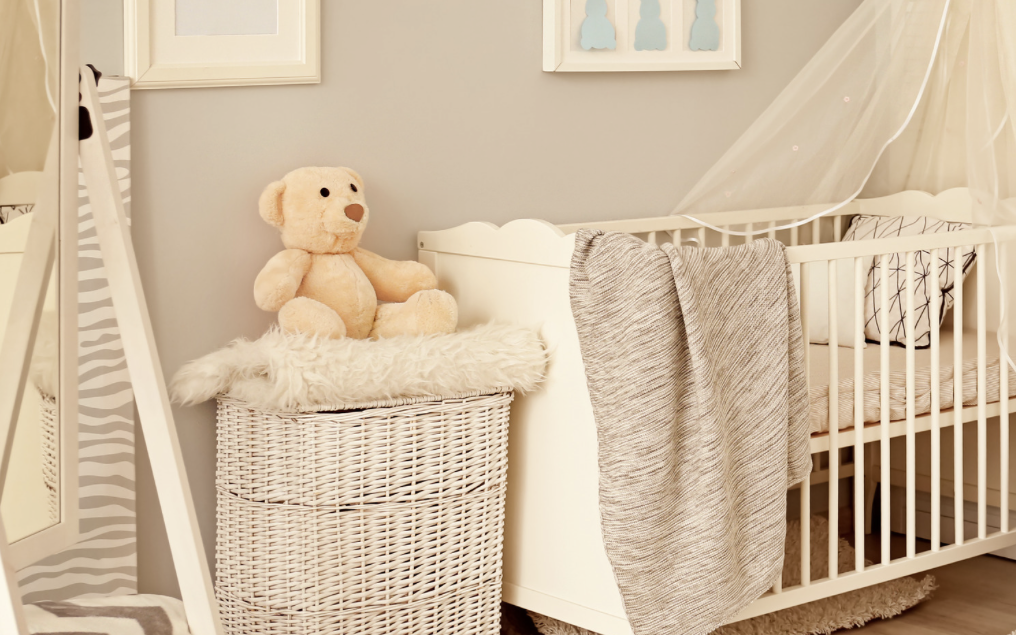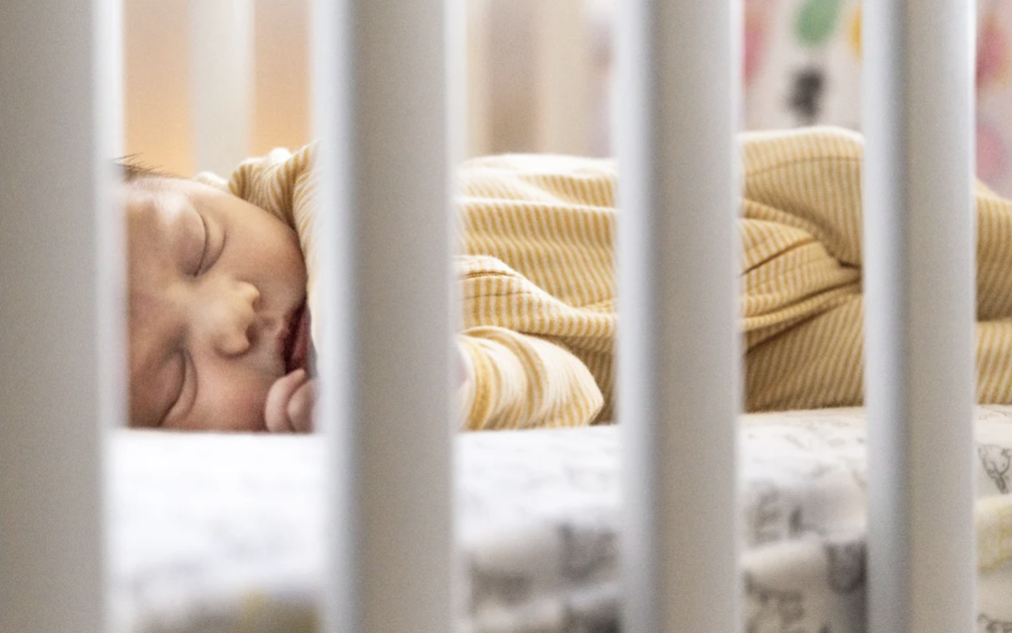Sibling Sleep Dynamics: Tips for Helping Babies Share a Room or Sleep Space


Sharing a room or sleep space for siblings can present many challenges for not only the siblings, but parents as well! Having multiple little ones share a room or sleep space isn’t going to be easy – but it doesn’t have to be hard. By understanding the challenge of siblings sharing a room or sleep space and the importance of addressing sibling sleep dynamics early on, you will be better able to prepare your little ones for sharing a sleep space or room.
Understanding Sleep Dynamics
It’s important to first recognize the difference between siblings. Having siblings with varying age gaps places them in different developmental stages with varying sleep needs and patterns – they may have different sleep schedules or bedtime routines which can lead to them disturbing one another. In order to properly navigate each child’s unique sleep habits and have a functional sleep space for babies sharing a room or sleep space, there are things that you can do including:
- Create An Optimal Sleep Environment
- Establish Consistent Sleep Routines
- Manage Sibling Sleep Challenges
Let’s explore each of these tips further!
1) Create An Optimal Sleep Environment
The cornerstone of creating an optimal sleep environment comes down to space optimization. In order to optimize a room or sleep space for babies that will be sharing a room, there are several things that can be done. It’s important to arrange the room for comfort and safety. Ensure that all babies involved have their own separate sleep zones that are personalized to them and safely adhere to their individual developmental stages. This could involve using separate cribs, bassinets, or designated areas on a large bed to ensure that each baby has their own safe sleeping space. It’s also important to regularly monitor the sleep environment to ensure that it remains safe and optimal for both babies.
It’s also important to manage disturbances in the room in order to ensure that all babies involved are able to fall asleep and stay asleep. Managing disturbances begins with noise management. This can be done very simply with things like a white noise machine or a fan – these are honestly so helpful for noise management when trying to help even one baby fall asleep. It’s also important to minimize disturbances with lighting in the shared space. This can be done by dimming lights or using blackout curtains. Nightlights can also be used for comfort without disrupting sleep.
Now let’s dive into the world of sleep routines.

2) Establish Consistent Sleep Routines
Consistency is key! I know it’s hard to be consistent, but being consistent especially with something as delicate as a sleep routine is crucial. It’s important to establish a regular bedtime and wake-up time for both siblings. Not only is being consistent with timing important, but consistency with sleep rituals is just as important.
Sleep rituals can and very well may look different for both siblings. This can look like separate bathing rituals for each sibling where one sibling is bathed while the other reads a book quietly or finishes up their dinner and then their bedtimes are staggered or both siblings eating together, being bathed and put to bed at the same time – or it may look completely different depending on what rituals work for each sibling involved. Doing these things can signal for both siblings that it’s time for sleep. Having a consistent sleep ritual and routine is essential for helping both siblings feel secure and prepared for sleep.
I’ll be honest, there will be challenges and how you manage sibling sleep challenges matters.

3) Manage Sibling Sleep Challenges
I’m not going to make it seem like everything will be all peachy all of the time. There may be conflict and how you address those conflicts matters. When conflict or jealousy and sibling rivalry arises, it’s CRUCIAL to address the conflict or rivalry in a gentle, but firm way. It’s important that both siblings understand that their needs are equally important by providing them with individual attention and reassurance. It’s also essential to foster sibling bonding and cooperation. This really comes down to exposing the siblings to experiences where they are really able to bond and enjoy spending time together. This will transcend from the playroom to their sleep space as they grow to develop a fondness for each other and understand they they exist outside of each other and have their own individual needs.
It’s also important to deal with any night waking or sleep disturbances that may occur. This, of course, should be done gently and can be done by encouraging all caregivers involved to respond promptly to babies’ needs while also promoting self-soothing techniques to help babies learn to fall back asleep independently when it is age appropriate. In order to effectively manage sibling sleep challenges, it’s also important to provide individual attention and reassurance to both siblings so that they feel that both of their needs are important and are being met.
Not only this, but it’s important to identify any underlying causes for sleep challenges such as factors in the actual sleep environment or factors relating to the actual physical well-being of both siblings. Okay, now let’s dive into my tips for parents embarking on the challenging journey of babies sharing a room or sleep space.

Tips For Parents
If you have babies sharing a sleep space, it’s also important to make time for your personal well-being. First and foremost, you need to prioritize self-care and rest. Creating a functional sleep space for both siblings involved can be physically and emotionally demanding, so be sure to take breaks and ask for help when you feel like you need it.
If you’re struggling with sleep-related challenges or concerns, it can be helpful to utilize resources such as support groups or parenting classes in order to discuss your struggles and concerns with a group of like-minded individuals. More importantly, don’t hesitate to seek guidance from a pediatrician, lactation consultant, or sleep specialist (like me!) who can provide personalized advice and support to help you navigate this stage effectively.
In addition to being a Licensed Practical Nurse (LPN), Doula, and International Board Certified Lactation Consultant (IBCLC), I am certified as an Infant Sleep Educator from BeboMia and specialize in gentle sleep coaching. When working with a family on sleep coaching, my goal is to assist the family with striking the just-right balance between getting more sleep while respecting a baby’s need for closeness and nighttime parenting. Taking a compassionate approach is at the heart of what I do, meeting you where you are and guiding you to a goal that addresses your and your baby’s needs. If you’re interested in booking one of my virtual sleep coaching sessions, you can do so by clicking here.
Make sure to visit our website, shellytaftibclc.com, where you can check out our online parenting community, the baby bistro. You can also follow us on social media at @shellytaftibclc on Instagram. Thanks for reading and see you on the next blog!

